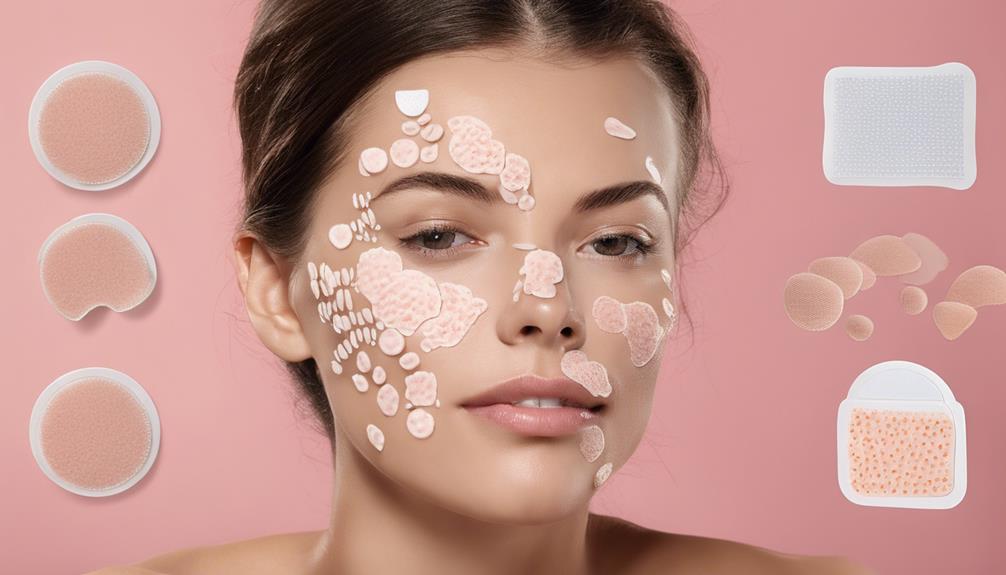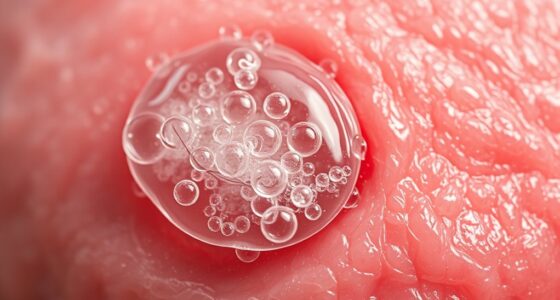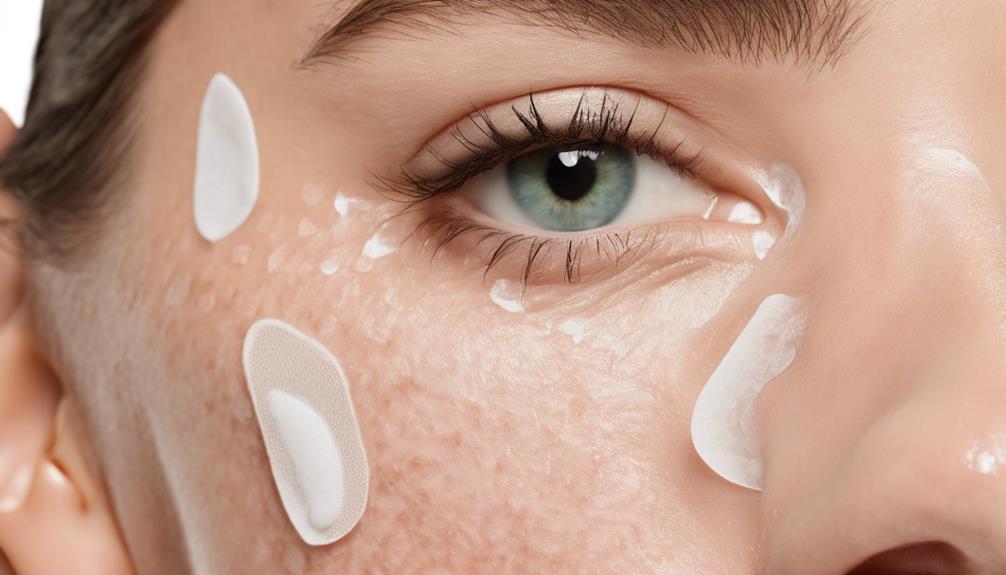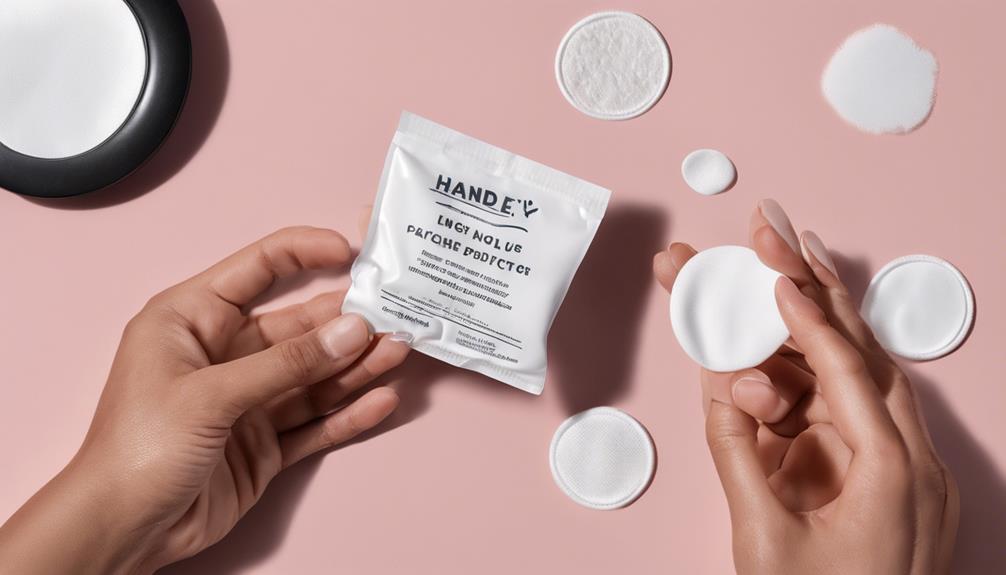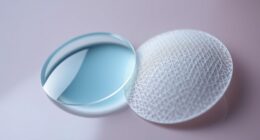We typically recommend leaving pimple patches on for 6-12 hours for mild to moderate acne, while severe pimples may benefit from up to 24 hours of wear. Checking for saturation and ensuring adhesion helps maintain effectiveness. Factors such as skin type and patch ingredients influence wear time. For mild pimples, aim for 6-8 hours with regular checks. Severe pimples can benefit from extended wear. Overnight usage helps with faster recovery and better outcomes. Hydrocolloid patches effectively draw out impurities; changing them promptly is key. Following guidelines and monitoring skin sensitivity are essential. Optimizing wear time is crucial for effective acne treatment. Learn more about the benefits and usage of pimple patches.
Key Takeaways
- Mild pimples: Wear Fazits Zit Zapper patches for 6-8 hours.
- Severe pimples: Extend wear time up to 24 hours.
- Regularly change patches if saturated for effectiveness.
- Check skin sensitivity and follow product instructions.
- Overnight use promotes faster healing and better results.
Duration for Wearing Pimple Patches
When addressing the duration for wearing pimple patches, consider the specific recommendations for different levels of acne severity.
Pimple patches, made with hydrocolloid material, work wonders in absorbing impurities and aiding in the healing process. For mild to moderate pimples, it's ideal to wear the patch overnight, allowing it to work its magic for an extended period of time.
The recommended duration for wearing these patches is typically 6-12 hours, ensuring that they’ve enough time to draw out impurities effectively. In cases of severe pimples, leaving the patch on for up to 24 hours can provide added benefits in tackling stubborn blemishes. It’s important to follow the manufacturer’s instructions for optimal results, as different brands may have varying recommendations. The pimple patch application duration can significantly impact its effectiveness, so make sure to monitor your skin’s response after use. Additionally, for those with sensitive skin, it’s advisable to start with the shorter duration and gradually increase it to prevent any irritation.
Remember to check the patch regularly for saturation or loss of adhesion to guarantee its efficacy. By following these guidelines tailored to different acne severities, you can maximize the benefits of pimple patches and promote clearer, healthier skin.
Factors Influencing Patch Wear Time
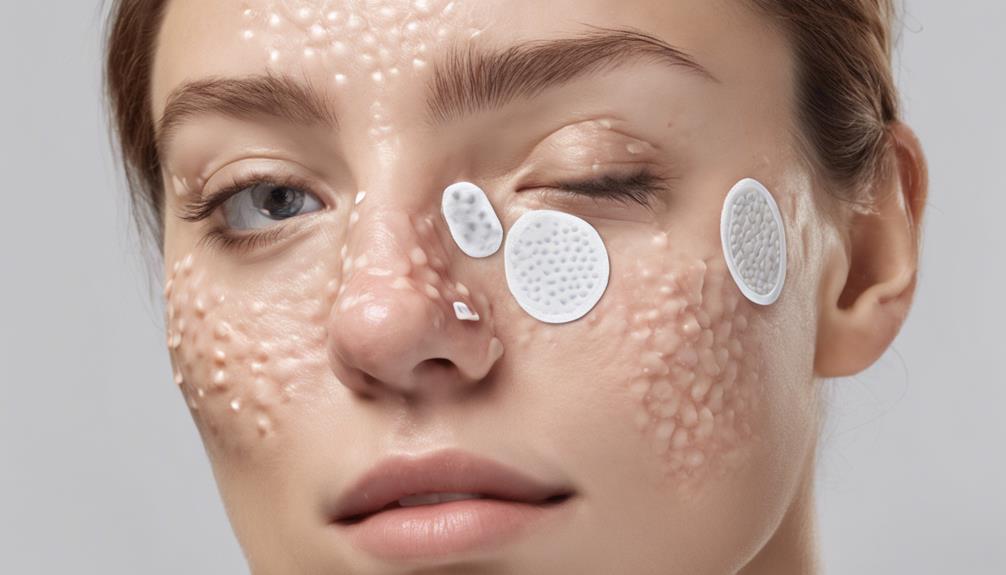
Factors that influence the wear time of pimple patches include the individual's skin type and the specific ingredients in the patch. Patches made of hydrocolloid material work by absorbing impurities and promoting healing of the pimple, making them effective for various skin types.
For severe pimples, leaving the patch on for up to 24 hours can be beneficial. However, it's important to check and change the patches regularly, especially if they become saturated or lose adhesion, to ensure maximum effectiveness.
Optimal Wear Time for Mild Pimples
When addressing mild pimples, we typically advise wearing Fazits Zit Zapper Acne Patches for 6-8 hours to allow the hydrocolloid material to work its magic. This timeframe is best for absorbing impurities and facilitating the healing process.
It's important to monitor the patch regularly and replace it if it becomes saturated or loses adhesion for the best results.
Optimal Wear Duration
For mild pimples, Fazits Zit Zapper Acne Patches can typically be worn for 6-8 hours either during the day or overnight to effectively combat breakouts.
- Hydrocolloid patches absorb impurities and aid in the healing process.
- Best wear duration for mild pimples is up to 24 hours if needed, with regular checks recommended.
- Changing the patch when saturated or losing adhesion guarantees continued effectiveness.
- Following the recommended wear time prevents further irritation and reduces pimple appearance.
Patch Removal Timing
Considering the essential wear time for mild pimples, determining the best timing for removal of Fazits Zit Zapper Acne Patches is important in maintaining their effectiveness. These patches, made from hydrocolloid material, work by absorbing impurities and promoting healing.
For mild pimples, it's recommended to wear the patch for 6-8 hours or overnight. Regularly checking and changing the patch, especially if it becomes saturated, guarantees excellent results. The duration of wearing the patch can also depend on individual preference and the severity of the pimple.
Severe pimples may benefit from leaving the patch on for up to 24 hours. Finding the right balance between wear time and patch removal timing is crucial for maximizing the benefits of Fazits Zit Zapper Acne Patches.
Extended Wear Time for Severe Pimples
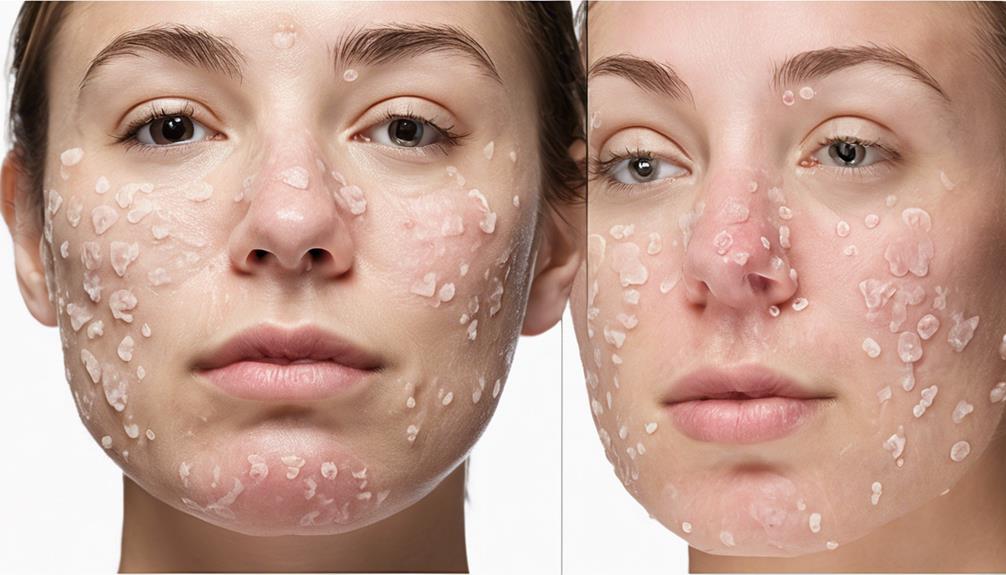
When dealing with severe pimples, it's imperative to contemplate an extended wear time for pimple patches. This approach helps to maximize the healing benefits of the patch by allowing it to work continuously.
Following the product instructions and monitoring skin sensitivity are key factors in ensuring the effectiveness of the extended wear time.
Maximize Healing Benefits
To maximize the healing benefits of pimple patches on severe pimples, consider extending their wear time up to 24 hours. The hydrocolloid material in the patch absorbs impurities and promotes faster healing. Extended wear time can aid in reducing inflammation and accelerating the healing process of severe pimples.
Keep an eye on the patch for saturation or loosening, changing it regularly to maintain its effectiveness. Monitoring the patch's condition and making necessary changes guarantees best results in treating severe pimples.
Follow Product Instructions
Extending the wear time of pimple patches for severe pimples up to 24 hours can greatly enhance their healing benefits by allowing the hydrocolloid material to absorb impurities more effectively.
When using pimple patches, it's important to apply a pimple patch to the affected area following the product instructions. For severe pimples, leaving the patch on for an extended time can maximize the hydrocolloid's ability to draw out impurities and speed up the healing process.
Remember to regularly check the patch for saturation or loss of adhesion, and change it promptly if needed.
Monitor Skin Sensitivity
For those with sensitive skin, monitoring skin sensitivity is crucial when considering extended wear time for severe pimples. Here are some key points to keep in mind:
- Extended wear time (up to 24 hours) may be suitable for severe pimples that require prolonged treatment.
- Saturated or loosened patches should be changed promptly to prevent skin irritation.
- Regularly checking the patch's condition helps guarantee maximum effectiveness.
- Consulting a dermatologist for personalized guidance on patch wear time is advisable for individuals with skin sensitivities.
Importance of Regular Patch Checks
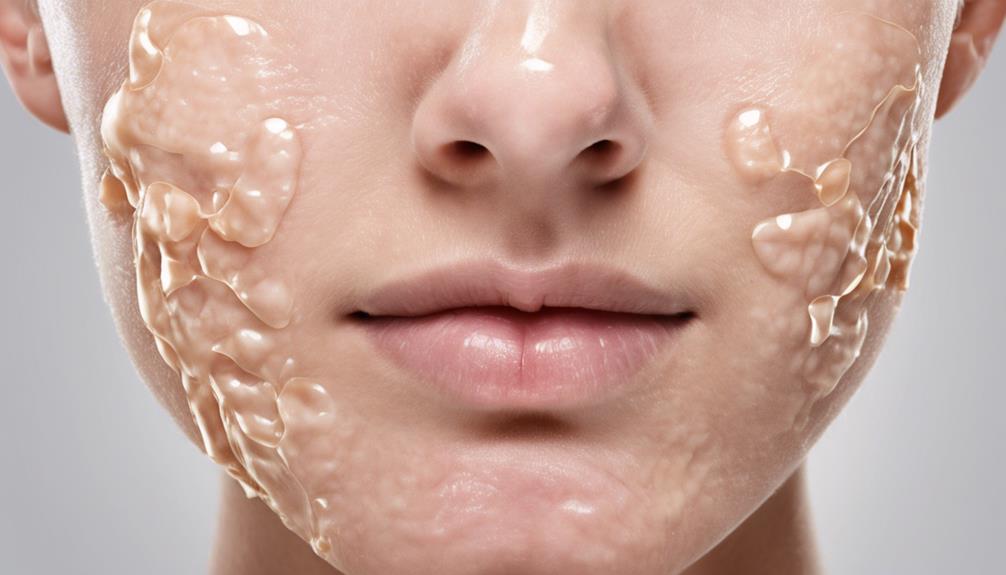
Regularly inspecting pimple patches is essential to guarantee their best performance in drawing out impurities and promoting skin healing. By monitoring patches, we secure their effectiveness in absorbing fluids and preventing bacterial growth.
It's important to change patches promptly when saturated to maintain their ability to draw out impurities effectively. Failing to do so can reduce their absorption capacity, hindering the healing process.
Properly checking and changing patches not only prevents bacterial buildup but also aids in quicker pimple healing. This simple step can make a significant difference in promoting skin recovery and preventing further breakouts.
Changing Patches for Effectiveness
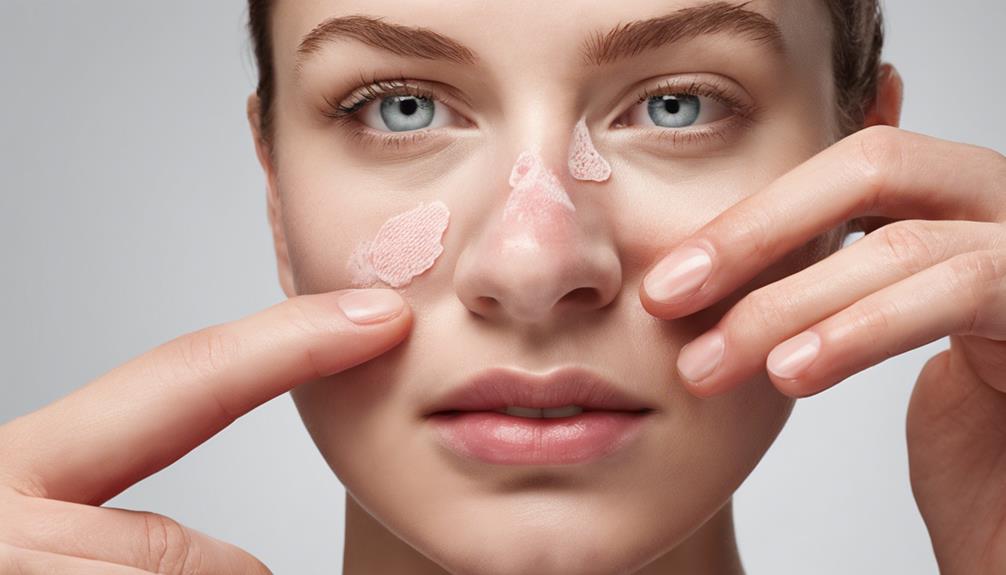
To guarantee the peak performance of pimple patches, it's important to change them promptly when saturated with impurities. When it comes to ensuring top effectiveness and continued treatment, here are some key points to keep in mind:
- Remove the patch: Change patches if they become saturated to maintain their effectiveness.
- Check adhesion: Regularly monitor the adhesion of the patch to ensure it stays in place for the recommended time frames.
- Monitor skin: Keep an eye on your skin for any signs of irritation, especially if patches are left on for extended periods.
- Follow recommended time frames: Adhere to the suggested duration of wear to prevent skin irritation and promote the best results.
- Continued treatment: Changing patches as needed allows for ongoing treatment and better outcomes in managing pimples.
Overnight Patch Usage Considerations
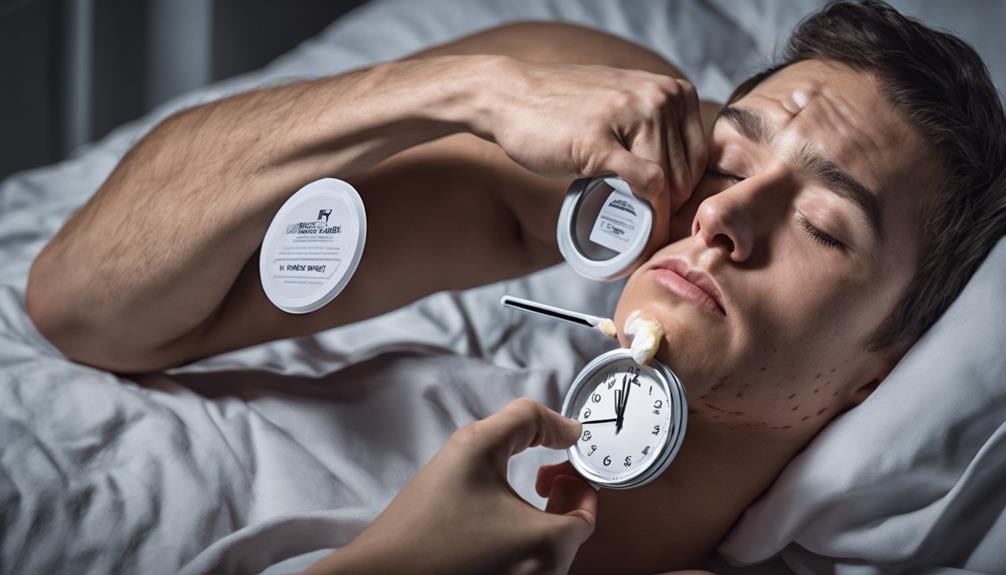
When using pimple patches overnight, it's important to consider the duration of wear for optimal results. Overnight patch usage allows for an extended treatment time, giving the patch more opportunity to absorb impurities and aid in faster healing. Leaving the patch on while you sleep maximizes its effectiveness.
In the morning, removing the patch can reveal reduced inflammation and improved skin appearance. This extended wear can also help prevent picking at pimples, which can further irritate the skin. By promoting healing throughout the night, these patches work to improve the overall condition of the blemish.
Consistent overnight patch usage can lead to better outcomes and faster recovery. Remember, leaving the patch on overnight is a simple way to support your skin in its healing process, so consider incorporating it into your skincare routine for enhanced results.
Promoting Healing With Hydrocolloid Patches
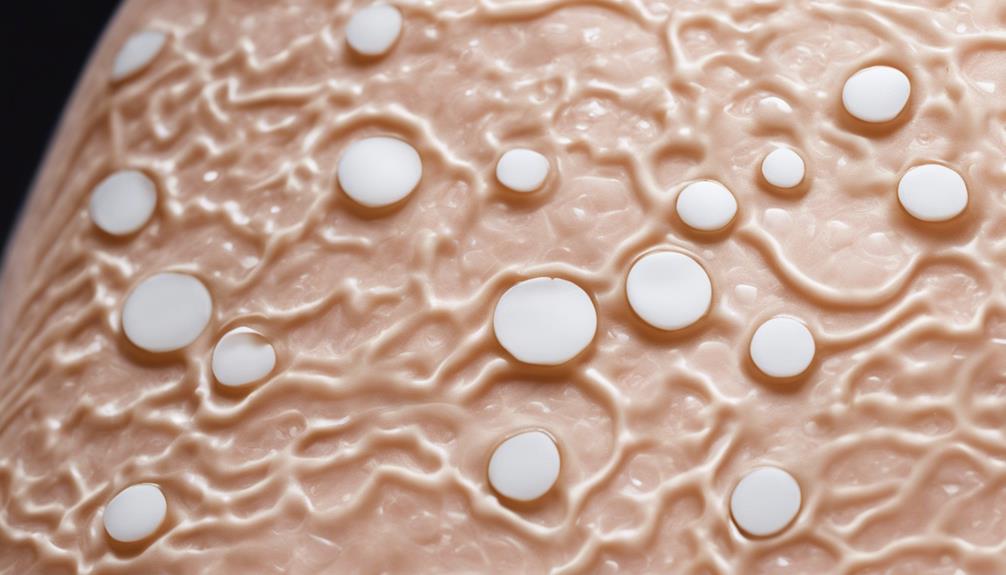
Using hydrocolloid patches to promote healing involves leaving them on for a minimum of 6 hours to effectively draw out impurities. These patches work by absorbing excess sebum, pus, and impurities from the pimple, aiding in the healing process.
Here are some key points to keep in mind when using hydrocolloid patches for promoting healing:
- Leaving the patch on for up to 12 hours can maximize its effectiveness in drawing out impurities.
- Regularly changing the patch if it becomes saturated or loses adhesion is important for best results.
- Monitoring the patch for changes in color or saturation can indicate when it's time to replace it for continued treatment.
Frequently Asked Questions
Can You Leave a Pimple Patch on Too Long?
Yes, leaving a pimple patch on for too long can potentially irritate the skin. It's important to follow the recommended duration of usage, typically around 6-12 hours, to prevent any adverse effects.
Overextending the wear time might lead to excessive dryness and skin irritation, especially for those with sensitive skin. Monitoring the patch regularly and changing it as needed guarantees the best results without causing harm to the skin.
Do Pimple Patches Work on Unpopped Pimples?
Pimple patches are more effective on whiteheads than unpopped blind pimples. They work best on pimples that have come to a head, aiding in healing and protection. Unpopped pimples, located deeper under the skin, may not fully benefit from these patches. Other acne treatments or professional care could be more suitable for such pimples.
It's essential to take into account the type of pimple when deciding on the use of pimple patches.
Why Do Pimple Patches Turn White?
When pimple patches turn white, it signifies they've absorbed sebum and impurities, indicating their effectiveness. This color change means the patch has saturated and should be replaced for continued benefits.
The white appearance shows the completion of the absorption process, prompting a new patch for best results. Monitoring this change helps maintain the patch's efficiency in drawing out impurities and supporting healing.
What to Do After Taking off a Pimple Patch?
After taking off a pimple patch, gently cleanse the area to remove residue. Apply a non-comedogenic moisturizer for hydration.
Avoid picking or popping the pimple to prevent scarring. Resume your skincare routine and prescribed treatments. Reapply the patch if the pimple isn't fully healed.
Conclusion
In summary, the ideal duration for wearing pimple patches varies based on the severity of the blemish. Regular checks and changing patches as needed are essential for effectiveness.
Overnight usage can promote healing, especially with hydrocolloid patches. Remember to follow instructions carefully and consult a dermatologist if needed.
By staying diligent in patch usage, you can help reduce the visibility of pimples and support skin healing.
